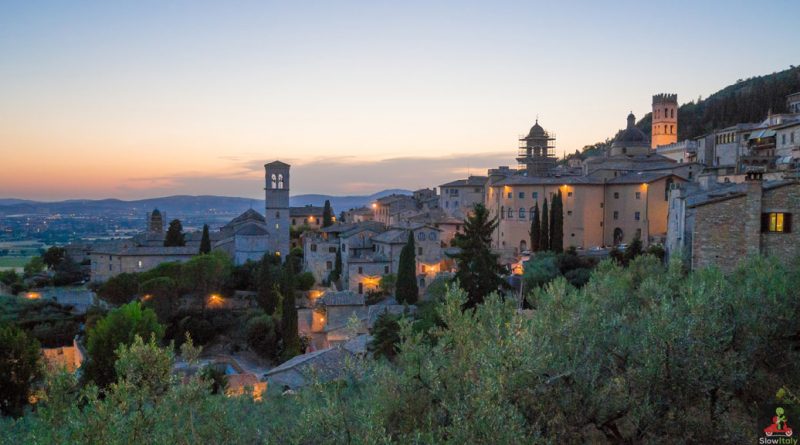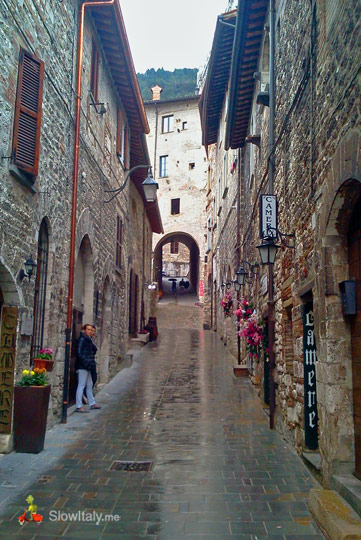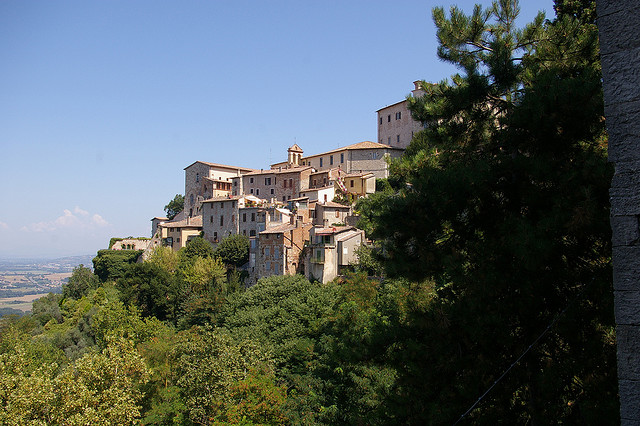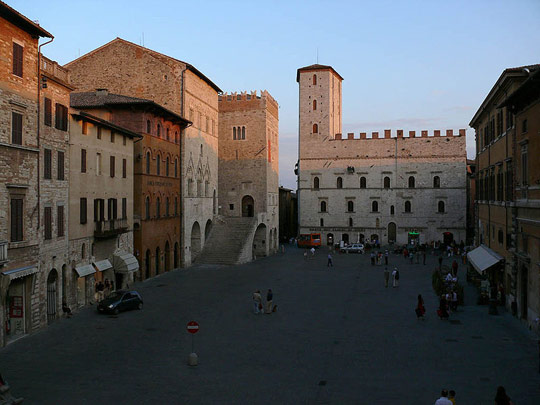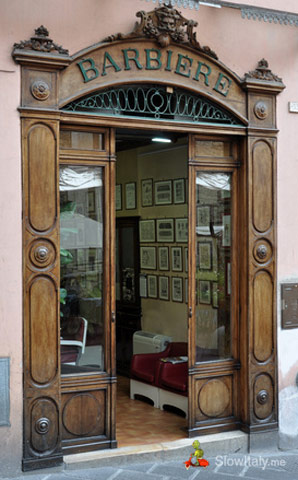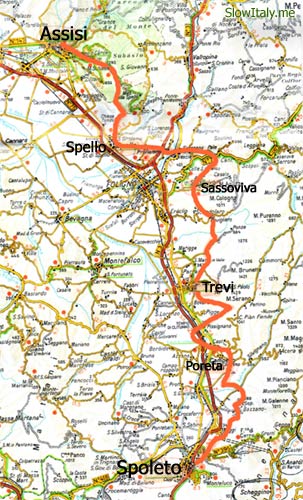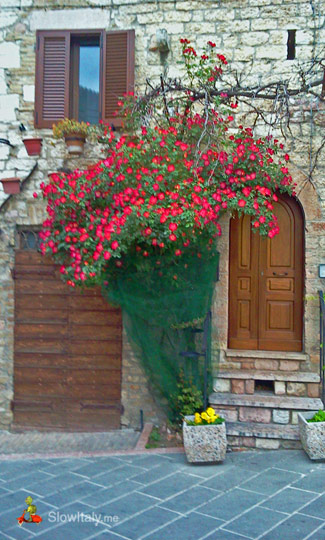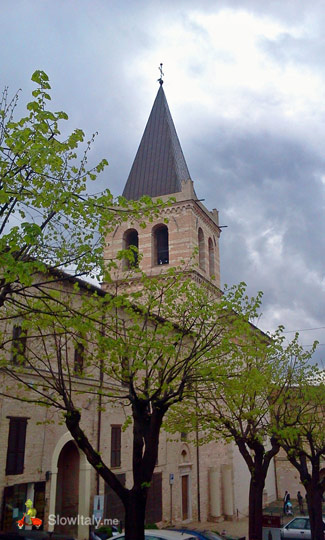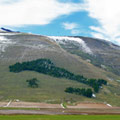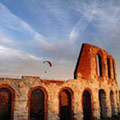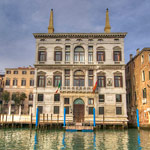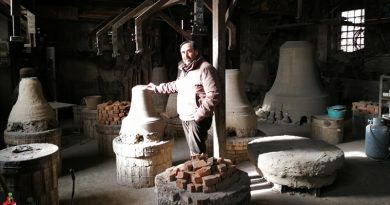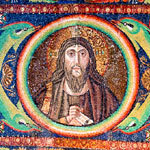5 charming little towns in ancient Umbria
Ancient Umbria is the territory once inhabited by the Umbri, the people who had settled east of the Tiber river in pre-Roman times. Indeed, before the Romans conquered whole of Italy, Italy was mainly populated by the Italics (which included the Umbri), who occupied the territory east of the Tiber river, while the Etruscans had settled west of the Tiber river.
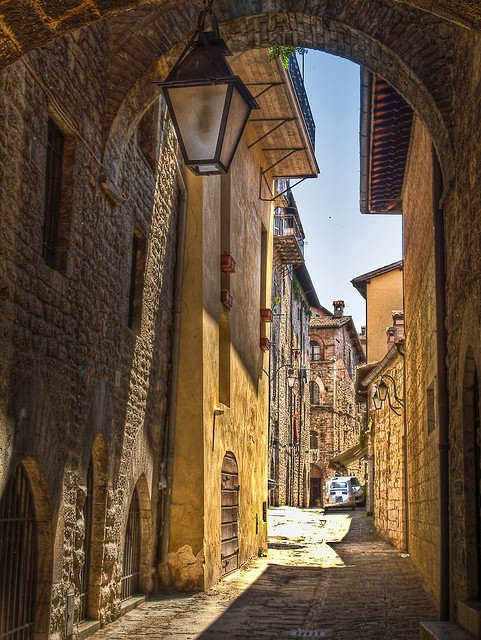
The five small towns we visited during our trip to Umbria are all located in this historical territory of the Umbri and have a special flavor about them. First, because Umbria is one of the few Italian regions that has managed to remain relatively preserved from mass tourism. It is the only Italian region with no access either to the sea or international borders. For this reason, for centuries the region has remained truly authentic in its way of receiving visitors, with their natural kindness, honesty and generosity, without being corrupted and spoiled by excessive contact with outsiders. Second, precisely because of the fact that this very specific part of Umbria was inhabited by the original people of Umbria, the Umbri.
In Antiquity, the Umbri were considered the gens antiquissima Italiae (the most ancient people of Italy). They had their own language, which, like Etruscan, was more ancient than the Romance languages. This antique Umbrian language was totally different from today’s Umbrian dialect and did not survive Roman expansion. However, the Umbri on this side of the Tiber river resisted absorption of their culture by the Etruscans, the invasions of the Romans and subsequent invaders. It is our quest for this type of ‘authenticity’ that brought us to Umbria and we were totally rewarded!
1. Gubbio
Of all medieval Umbrian towns, Gubbio is the one that has best preserved its historical and cultural heritage. Even the buildings in the old center still show visible traces of its past etched into their façades.
Spread out over the steep slopes of Monte Ingino, Gubbio is one of the Italian towns in which the harsh conditions of the Middle Ages can most easily be imagined. Especially if you visit the town on a rainy day as we did!
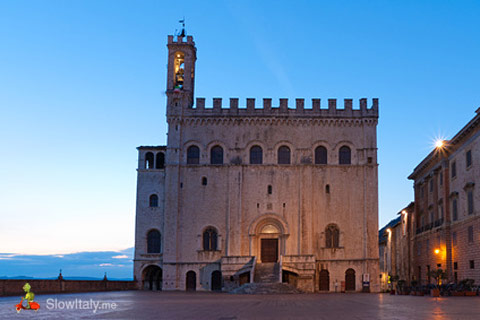

Since Medieval times Gubbio has been famous for its ceramics. The typical ceramics from Gubbio are red or green on a white background, but the many shops spread around the historic center also sell other types of ceramics made by local craftsmen.
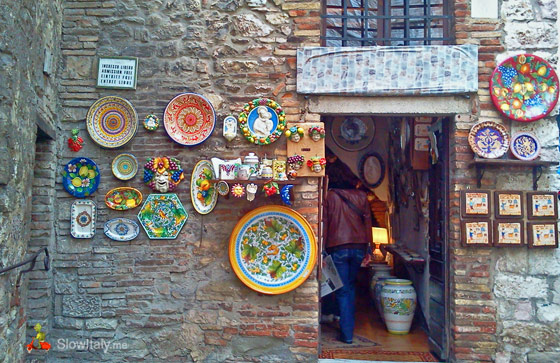
The most picturesque streets of Gubbio are Via Baldassini, Via Galeotti, Via Piccardi and Via dei Consoli. Important sights include the Città Vecchia with Piazza Grande, the Palazzo dei Consoli and the Palazzo Ducale.
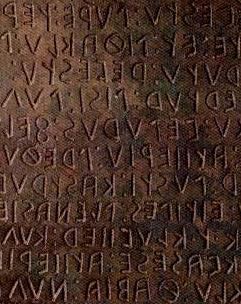
Not to be missed are the Tavole eugubine, seven bronze tablets inscribed in ancient Umbrian believed to date back to the IIIrd or IInd century BC, a unique piece in the fields of linguistics.
2. Todi
Its beautiful hilltop position and its enchanting medieval atmosphere make Todi one of the most delightful little towns of Umbria. A particularity of this charming historic town is that it has retained three sets of walls dating from the Etruscan, Roman and medieval eras.
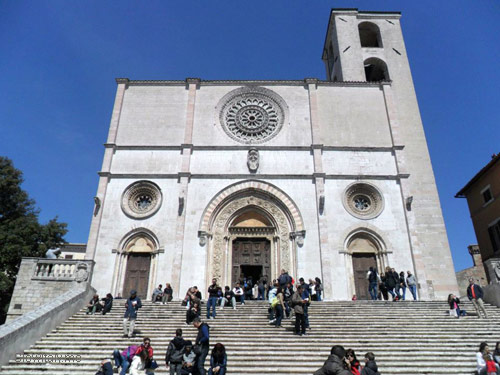
Piazza del Popolo is lined with palaces and building with Gothic and Renaissance features. The Palazzo del Popolo is one of the oldest communal buildings in Italy dating from 1213. It houses a museum of Etruscan and Roman antiquities. Other important sights include San Fortunato and the Duomo.

In the immediate surroundings there is also Santa Maria della Consolazione, about 1km/0.6mi west on the road to Orvieto.
3. Spoleto
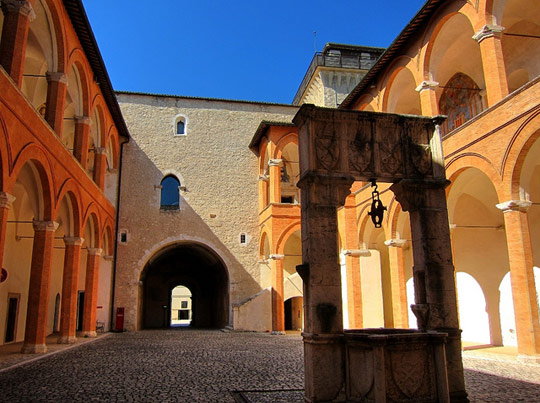
Located on the slopes of a hill crowned by the Rocca Albornoziana, Spoleto is a charming little town with narrow winding streets, palaces and numerous medieval buildings. The castles in Central Italy and Umbria specifically were not just noble residences, but served as the first urban centers, consisting of a dozen houses surrounded by high protective walls to protect their inhabitants against invaders.
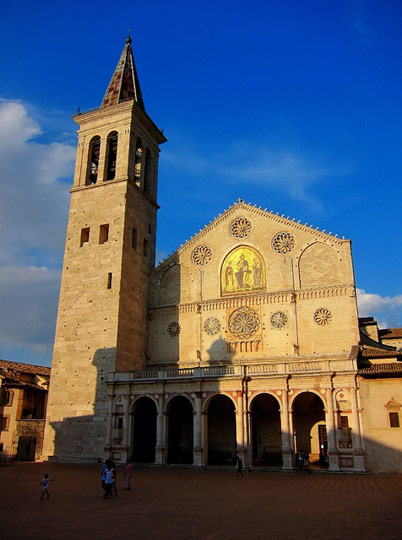
Important sights in Spoleto include the Duomo, the Ponte delle Torri, the Basilica di S. Salvatore and the romanesque church San Gregorio Maggiore.
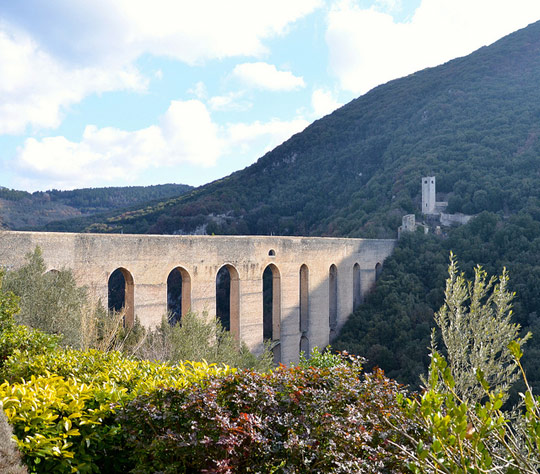
Each year the town hosts an international arts festival, the Festival dei Due Mondi (Festival of the Two Worlds).
Interesting sights in the surroundings include Monteluco, once the seat of an ancient cult. The road leading up to Monteluco is a beautiful winding road.
Tip: you can go from Spoleto to Assisi, on foot or mountain bike, following a nice path known as the Sentiero degli Ulivi (Olive Grove path). You can take the path in either direction, but we definitely recommend to do it from South to North, i.e. going from Spoleto to Assisi. Not only is the panorama more interesting in that direction, but this way you always have the sun in your back, which is more convenient when taking photos.The entire path covers 75km, divided into 5 stages: Spoleto-Poreta, Poreta-Trevi, Trevi-Sassovio, Spello-Assisi, each with a different level of difficulty. For maps and additional info, see here.
4. Assisi
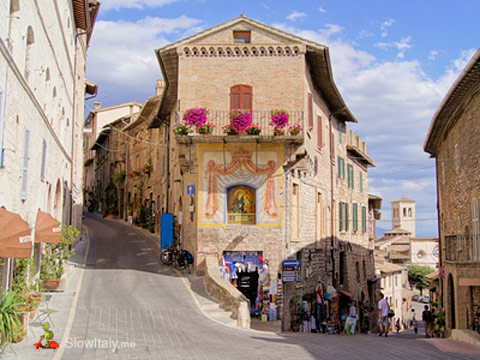
Originally an Umbrian town, Assisi gained considerable importance when it was conquered by the Romans.
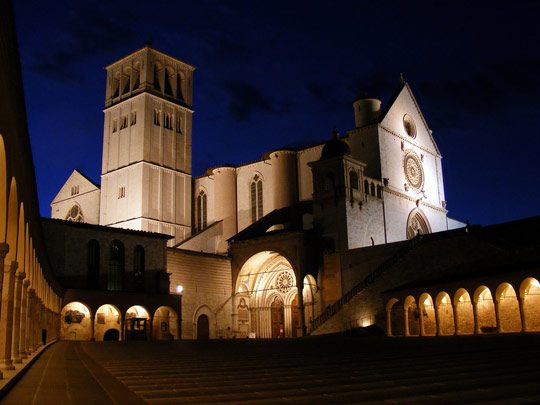
Home town of Saint Francis, the patron Saint of Italy, Assisi is the religious and mystical soul of the region. Many religious and historical festivities are organized in Assisi throughout the year. On the last day of April and the first day of May there is the Calendimaggio (May-Day festivity), celebrating Spring through music, flowers and processions in traditional costumes.
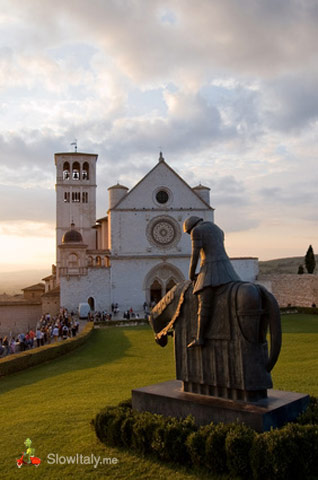
Basilica of San Francesco is best admired entering from the lower part of Piazza San Francesco. The Basilica consists of two superimposed churches. Giotto’s frescoes in the upper church constitute one of the most important cycles of painting in the history of Italian art.
5. Spello

Spello is one of the most picturesque and characteristic towns of Umbria, with its Roman remains and medieval character. Several years in a row the town has also won the title of Finestre, Balconi e Vicoli Fioriti (flowered windows, balconies and alleys).
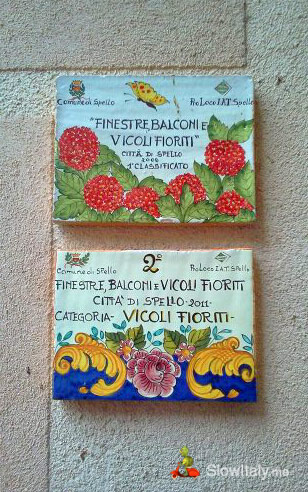
Each year the Infiorata in Spello takes place to celebrate Corpus Domini (the ninth Sunday after Easter).
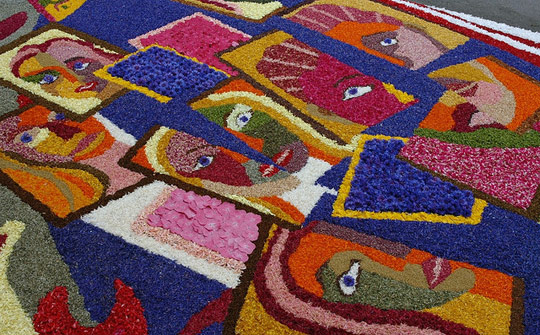
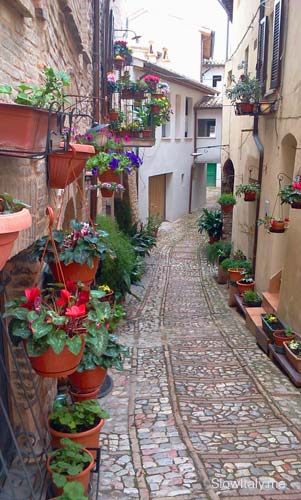
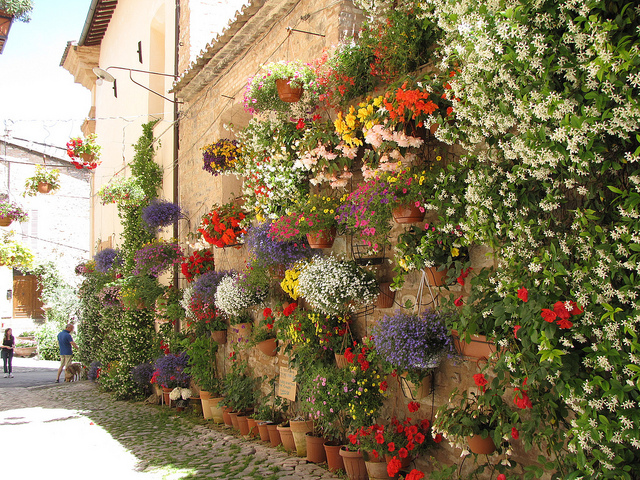
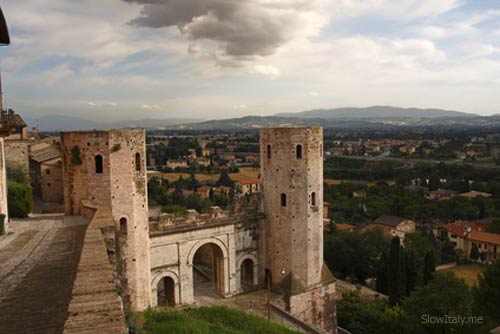
Noteworthy are the frescoes by Pinturicchio in the Baglioni Chapel in the Collegiate church of Santa Maria Maggiore.
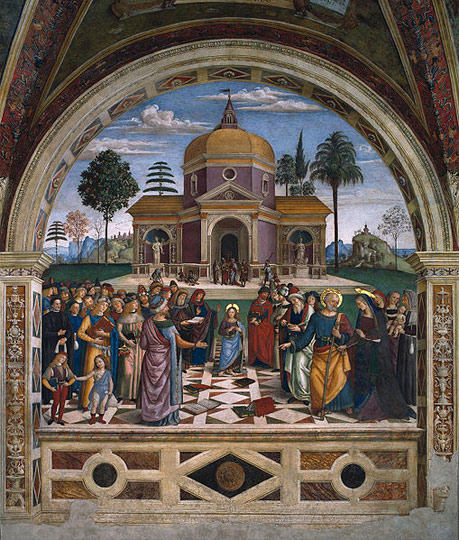
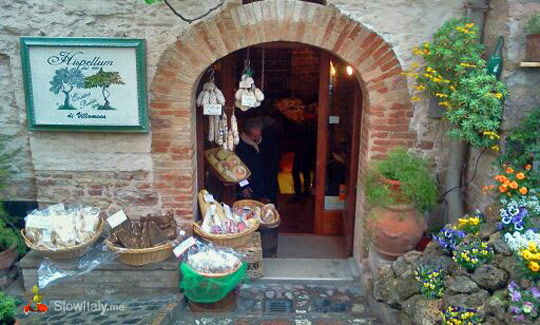

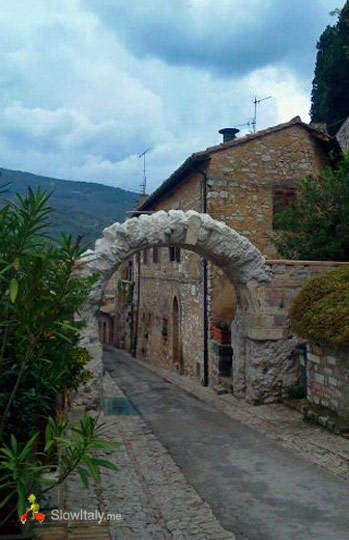
As we already mentioned above, there is a beautiful walking path going from Spello to Assisi, along the Olive Grove Path. For additional info see here.
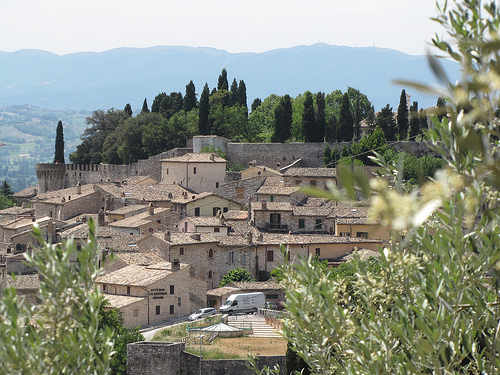
You may also like:
Top 5 most lovely country B&Bs and Relais in Umbria
Roman theater of Gubbio, Umbria
Photo credits (top to bottom): Assisi featured © ValerioMei/Istock; Alley in Gubbio by Anguskirk; Gubbio street by Tanzen80; Gubbio façades © Slow Italy; Gubbio Palazzo dei Consoli © Gianluca Curti/fotolia.com; Gubbio Piazza Grande © Slow Italy; Gubbio ceramics shop © Slow Italy; Gubbio street © Slow Italy; Todi by Deb Collins; Todi Piazza del Popolo by zyance; Todi Duomo © Francesca Tomassetti; Barbiere shop © hal_pand_108/Fotolia.com; Church of Santa Maria © Francesca Tomassetti; Rocca Albornoziana & Duomo, Spoleto by Lanfranch; Ponte delle Torri by Cristiano Guidetti – ViaggioVero; map by Slow Italy; Assisi streets © Jenifoto/Fotolia.com; Basilica of San Francesco by Sciura Pina; Assisi basilica © Pietro D’Antonio/Fotolia.com; Assisi flowers © Slow Italy; Spello (1 & 2 ) © Slow Italy; Infiorata di Spello by lorenzo_@pix; Spello © Slow Italy; Spello flowered pathways by Friar’s Balsam; Spello towers © anghifoto/fotolia; Spello shops (7, 8 ) © Slow Italy; Arch of Augustus © Slow Italy;Walking path by Friar’s Balsam.

